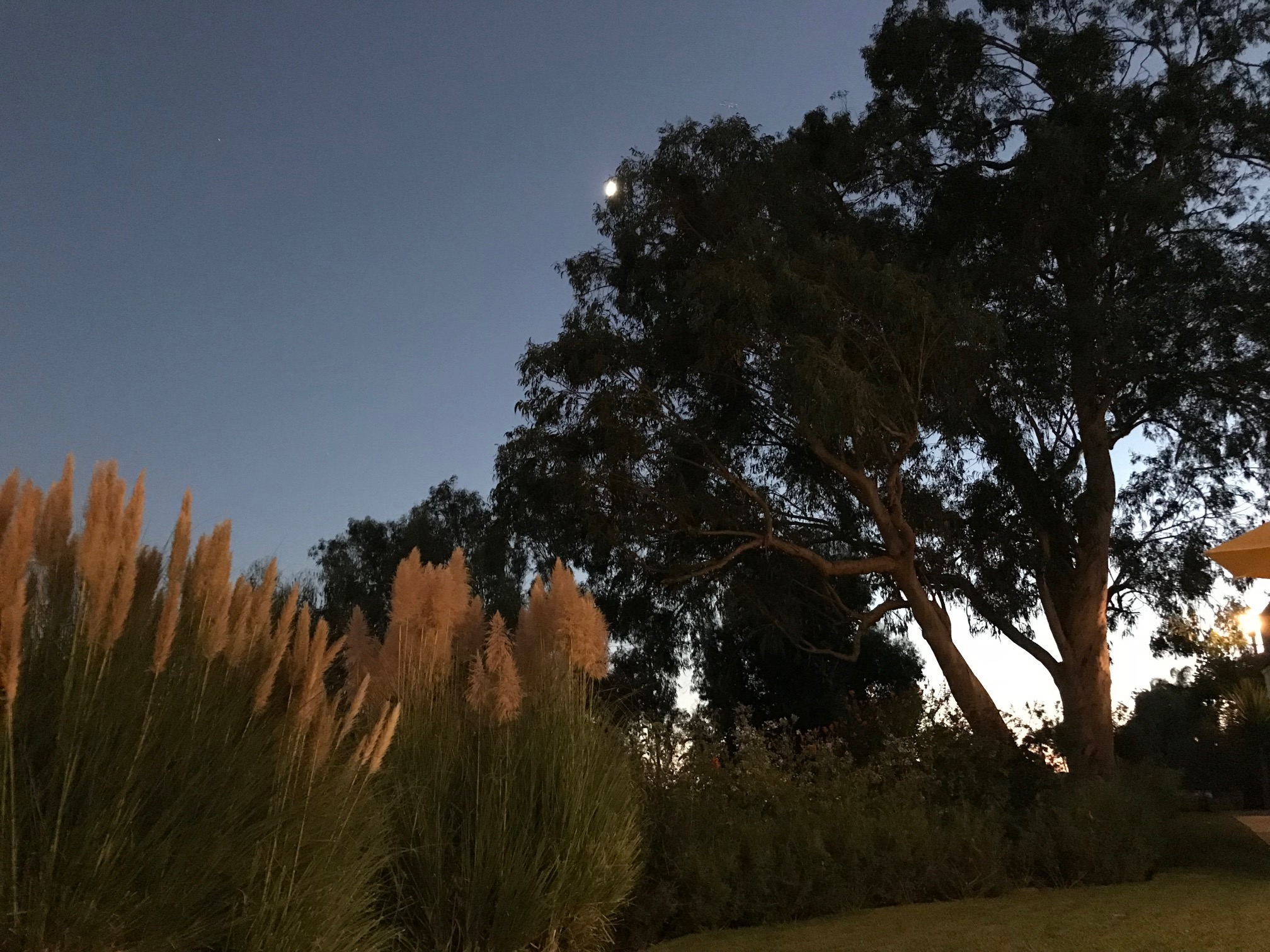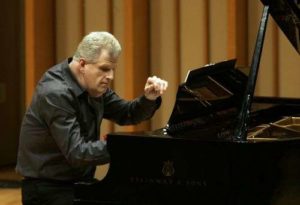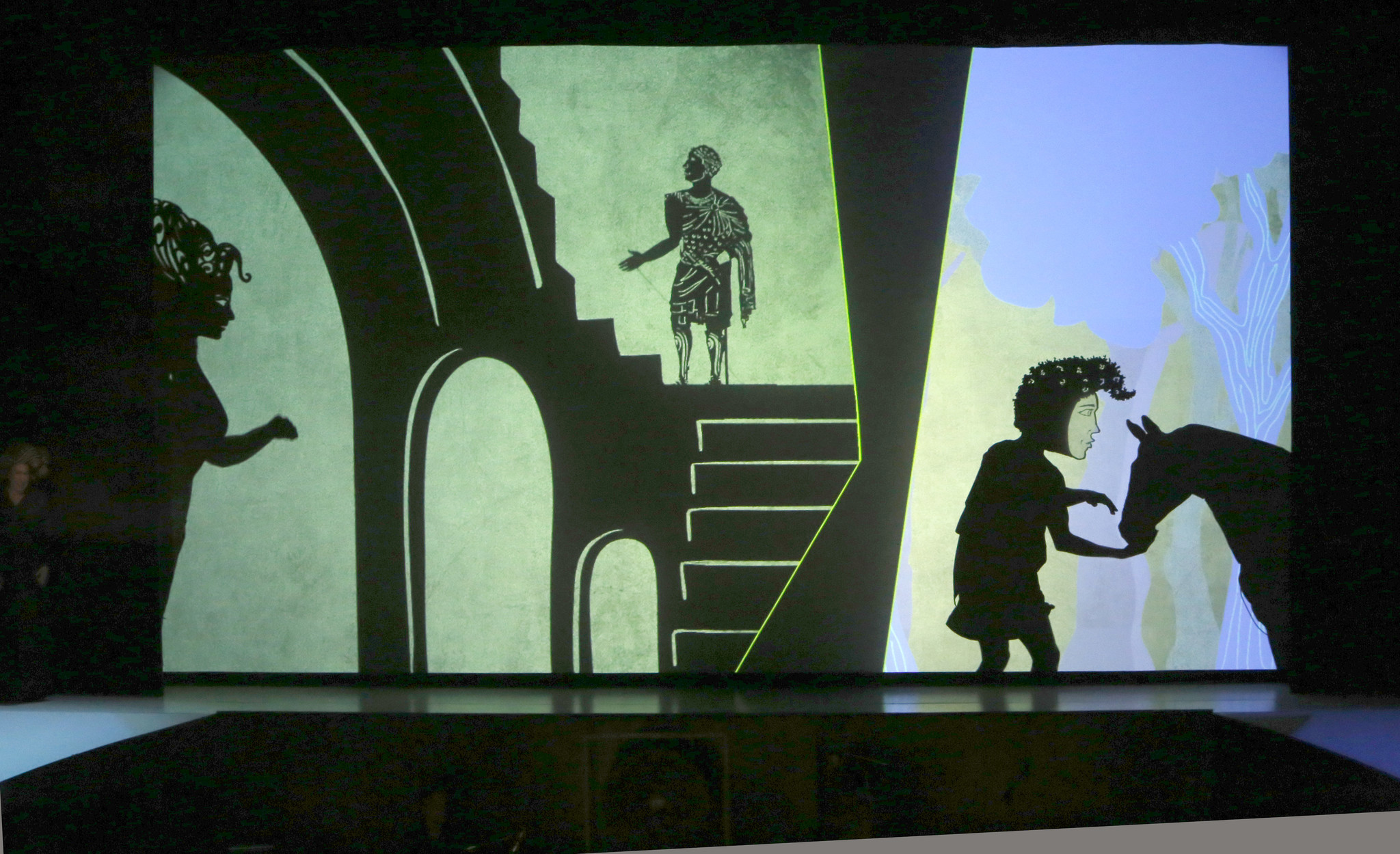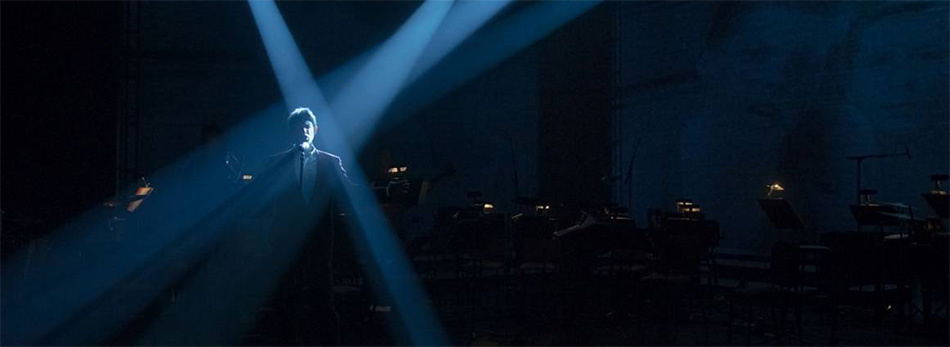Your cart is currently empty!
Tag: Vicki Ray
-

Moving Shadows, Constant Stars – Young Caesar
Young Caesar is born of a certain moment – a definably Californian, forward- and global-looking moment. In Lou Harrison’s music and the awkwardly framed conceits of its libretto by Robert Gordon, there is yearning, rather than the ‘ambition’ we might associate with the subject: yearning for an idyll of serenity, an embrace of time that touches both ancient epochs and the infinitude of the cosmos. (It’s – may I say this? – soooo Santa Cruz – of that moment.) Yet this Caesar was ambitious in its own way for the time it was written. It floats – and it makes perfect sense that sea voyage figures significantly in the plot. Harrison was aiming at a sustained lyric sequence or gambol with the structure of this story – really a kind of progress, except this ‘progress’ would also encompass ‘regress’ (and maybe regret). It’s a story about beginnings as well as the ambitions that come later in the history we know. It’s only natural that it unfolds as a dance as much as an opera; and it was inevitable that Harrison would be drawn to Javanese shadow puppets (those of the original productions apparently quite authentic) and shadow puppetry generally. The music itself – long lyrical motives in scales and intonation that mimic (or virtually reproduce) gamelan figures – lends itself to a continuous enfilade of various pairings, serenely ordered assemblies and regroupings, and the occasional divertissement.
It’s really a kind of court dance – and that is more or less the way Yuval Sharon and his Industry/Los Angeles Philharmonic cohorts have staged it here – with broad white runways curving down from a platform upstage and encircling the ensemble of L.A. Phil New Music players, which in addition to winds, spare strings (though including harp which figured prominently in certain sections of the score) and keyboards (the always essential Vicki Ray at piano and Lisa Edwards at pump organ), included an array of eastern stringed and percussion instruments that encompassed gamelan, and eastern zither and reed intonations and timbres. Musically, it channels a kind of Ravel chinoiserie by way of Henry Cowell and Virgil Thomson.
But it’s also a long dance not quite sure which aspect of the history it favors – the political tug-of-war (which was often literal and bloody) or the family saga, which in the case of Julius Caesar frequently intersected. I’m not quite sure if that’s what hung Robert Gordon up in putting together his exposition-heavy libretto – but it continues to weigh down the dance. Or simply interrupt it – since a good deal of it is delivered as straight narration. And however much punch narrator Bruce Vilanch could put into his speak-sing-chanting delivery, it did little to urge the dance-action forward. (A silent reading of Robert Graves would be far livelier.) Fortunately, Sharon makes maximal use of the backdrops – not simply as scrims for the shadow puppets, but as moving panoramas (projections beautifully designed by Kaitlyn Pietras and Jason H. Thompson) that evoke both classical decoration and classic mid-20th century design and illustration. During those moments when the narration (or for that matter the arias) dragged (or when I simply lost the thread of it), those beautiful projections were delicious relief.
I almost wonder if Gordon (and Harrison?) were slightly hung up with the novelty of situating a de facto homosexual relationship in a historical (and classical) context. ‘Get over it and get on with it,’ I can imagine anyone from Graves to Wilde to, well, Shakespeare advising them. (Consider the way Shakespeare addresses the dynamic between Caesar and Marc Antony. The passion there goes somewhere beyond political ambition – and I’m sure most of us were aware of that before we were out of grade school.) Fortunately (as Graves also reminds us), there are interesting women to push the story forward – and Harrison has not only given us a Julia, but the aunt Julia to mentor as well as match her nephew, and Nancy Maultsby makes the most of her role. Delaram Kamareh does pretty well, too, with her slightly mournful lines as Caesar’s young wife, Cornelia.
And then, after a bit of bloody family drama which plays far more tediously than it should, it’s all about the boy (Adam Fisher) Nicomedes (of Bithynia – played by Hadleigh Adams) is mad about. Well, as the masque (or is it the character himself?) wants to (constantly) remind us, you take your chances. The problem with this is that it’s too frequently the same chance (and always with the wrong partners – that much is as true to life as to history) – and also that the extended recitatives (as well as narration) really don’t do much to drive the plot, the dance forward.
The flip side of Chance in Harrison’s scheme is Time – the infinitude of which, as aunt Julia reminds the youthful Caesar is a luxury only the dead can enjoy. Sharon and his Industry collaborators certainly don’t squander it. The opera (which at one point was close to two hours) has been trimmed to a manageable 90 minutes-plus. But narration, recitatives and arias all need a fresh scrub. (Or maybe Gordon, et al. just need to have a look at I, Claudius and The Sopranos side by side.) And maybe the opera’s notion of time itself demands fresh examination. That would be at least as compelling as anything fluid about young Caesar’s sexuality.
But what Sharon, the L.A. Philharmonic, Industry, et al. give us finally is a finished work – the first really compelling, finished production of this opera fit for the opera/dance stage – or a king’s court. Harrison’s/Gordon’s characters are far too cultivated to be ‘masks’ for our most visible global oligarchs, but it wouldn’t be a stretch to see such a dance playing out at the Kremlin – a ‘phallic riot’ to offset the ‘pussy’ edition of a few years back across town at the Church of Christ the Savior – that icon whose debut 2,000 years earlier presaged the end of Rome’s Caesars.
As Harrison’s one-time contemporaries, Sonny and Cher, might have put it, the beat goes on.
-

A Little Night Music: 21c Liederabend, Op. L.A.
So much of contemporary art and music is preoccupied with a space, both physical and cerebral, between layers, liminal boundaries – the space between potential and actuality; the ‘what-if’ imponderables of what-was, what-might-have-been, and what-might-be. It’s both archaeological and futuristic. We’re peeling away layers of (terrestrial) crust, even as we’re reaching for a future (and stars) that might not be there.
I came away with something like this threshold sense from Disney Hall’s 21c Liederabend, Op. L.A., a co-production of Beth Morrison Projects and Paola Prestini’s VisionIntoArt, presented under the auspices of the Los Angeles Philharmonic’s Green Umbrella series – with John Adams both conducting the Philharmonic’s New Music ensemble and contributing excerpts from his own I Was Looking at the Ceiling and then I Saw the Sky. Like the John Adams songs, much of the programming was excerpted from more extensive song-cycles or quasi-operatic or theatrical works in progress, with visual (mostly video) elements that, with only one or two exceptions also appeared to be works in progress – some of them rough approximations of what they might evolve into. Others just plain rough. The video was projected onto a four-screen array – one large square screen above three smaller rectangles – which in at least one instance (the Hubble Cantata) spilled over beautifully into the Gehry ‘french-fries’ organ installation and surrounding space. There was a certain amount of frictive buzz about the video at intermission with a number of vocal complaints about the quality, or even the need for it – especially when the music itself was so new and the focus was clearly on the musicians and vocalists. It was hard to argue the point when – with musicians like Vicki Ray, the brilliant L.A. Phil woodwind crew, vocalists like Peabody Southwell, Nathan Gunn and Cedric Barry, the incomparable Timur and his genius Dime Museum, Jessica Rivera (and I won’t go on) – music and lyrics were in fact more than enough. For the moment….
There were no supertitles because of the video installation, so I (and most of the audience I have to guess) really were focused on the songs by themselves. But I could understand the impulse to give a kind of storyboard glimpse into the stories and production ideas that fed into them as parts of longer song cycles or full-blown opera or theatrical productions. Even if it only worked as an adjunct to the (at moments) brilliant live performances, it never seriously intruded, while giving a hint (or more) of where such performances might ultimately be taken.
The video was also used for introductions to the songs/selections by the composers themselves. This was both slightly offputting and bemusing. Did I really need to hear this? I wondered; yet it was undeniably arresting. Then half the time I found myself still more surprised by the music that had actually been composed. The evening was fully of these little starts and jumps. Straightaway I was surprised (pleasantly) by Adams’ distinctly non-Minimalist I Was Looking…. Complex and multi-layered, heavily jazz-inflected especially in the brass and winds, yet steadily driving through the polyrhythmic textures, the songs evoked different moods to match their episodes: a cop self-righteously arresting an innocent bystander, the carnival of confusion (and still more self-justification) that follows; and an epiphanal moment in the somewhat delayed (non-)resolution.
Without addressing the totality of the Adams songs or their success (I liked what I heard), the moment of ‘non-resolved epiphany’ set the tone for an evening that was continuously taking us by surprise in ways we could scarcely define. Listening to David T. Little’s less-than-promising description of his project for Timur and the Dime Museum, I steeled myself for disappointment – it sounded like such a mashed rehash of ideas overworked to death by everyone from Reich to Ashley to Chris & Cosey of Throbbing Gristle – to, I don’t know, Brion Gysin??? The title alone plunged me into despair (‘Artaud in the Black Lodge??’ – I have my apartment for that….) Well, maybe it was that ‘I don’t know’ factor (then too, the texts by Anne Waldman date back to that period) – but, what poured forth from Timur and his genius mates (including Daniel Corral, genius in his own right), was dark, steely (yes, a little ‘industrial,’ too), also chromatic, slashing, soaring and brilliant. It didn’t hurt that Timur was in especially fine voice – taking the near baritone-lows and soaring mezzo/soprano highs with unsurpassed clarity and brilliance.
The dark cathode-ray industrialism of Little’s Artaud (the video projections were by S. Katy Tucker) were a stunning contrast to the white light/sand/snow imagery of the Jacob Cooper/Greg Alan Brownderville songs that preceded it, from Ripple the Sky (an L.A. Phil commission), in which the video was by Cooper himself. Here, the largely high-register, microtonal music seemed almost overwhelmed by the alternately desert/alpine imagery – blinding white sand/snow/salt – appropriate for an elegy to a desertified planet – fading out into lights and monitors; but leaving the audience without any real ‘shards of song’ to hold onto.
Leaha Maria Villareal’s Never Not – with its Beckett-ian text by Adara Meyers – might have adopted a comparable white-out aesthetic, but worked with a slightly more chromatic palette drawn from nature (or at least viewed through a time-lapse lens); also more musically chromatic and beautifully textured with string quintet, keyboards, woodwinds, chimes, and most importantly Peabody Southwell’s sharp, emphatically phrased vocal. Ted Hearne’s when you hear, taken from his Sound From the Bench, with a text by Jena Osman, made reference to a line sampled from a text on ventriloquism by Charles Henry Olin, “when you hear that distant sounding drone, / you know you have your mouth as it should be,” but its successfully imparted sense of displacement relied heavily – not only on the supple, jazz-inflected musicianship (cf., Miles Davis, Ornette Coleman – with a touch of digital delay) of Taylor Levine and James Moore and their New Music cohorts – but on the robust choral tapestry of the Los Robles Master Chorale (under Lesley Leighton’s. direction). (The video – a grid that morphed from curtain walls to a matrix of spinning ventriloquist dummies was serviceable – but nothing as breathtaking as the music.)
Paola Prestini’s excerpts from The Hubble Cantata – inspired by the work of Mario Livio on the Hubble Space Telescope – could not help being the high point of the evening visually as well as musically – with its spectacular Hubble telescope photography of galaxies, nebulae and supernovae in deep space spilling over the screens and into the vaults of Disney Hall. But notwithstanding the ‘Champagne supernova’ of the L.A. Phil musicians, the sonorous Los Robles Master Chorale, and the visuals, I wondered if it were simply Mario Livio’s own words – spoken by Livio himself – that were its most inspiring aspect. It brought the evening beautifully full circle: the species that rarely seems capable of seeing beyond its own ceilings found a moment of cold comfort staring into the cosmos. We’ll be joining those bright and dark stars soon enough.



